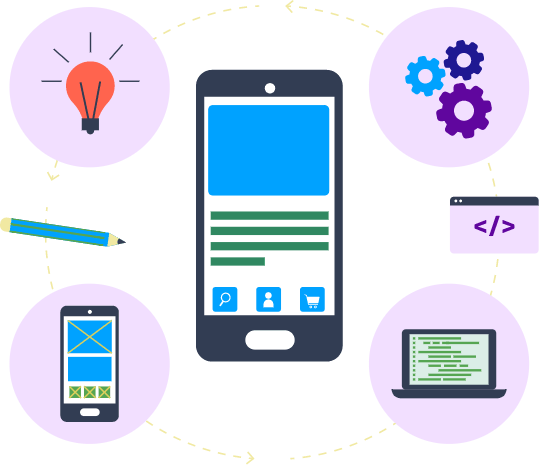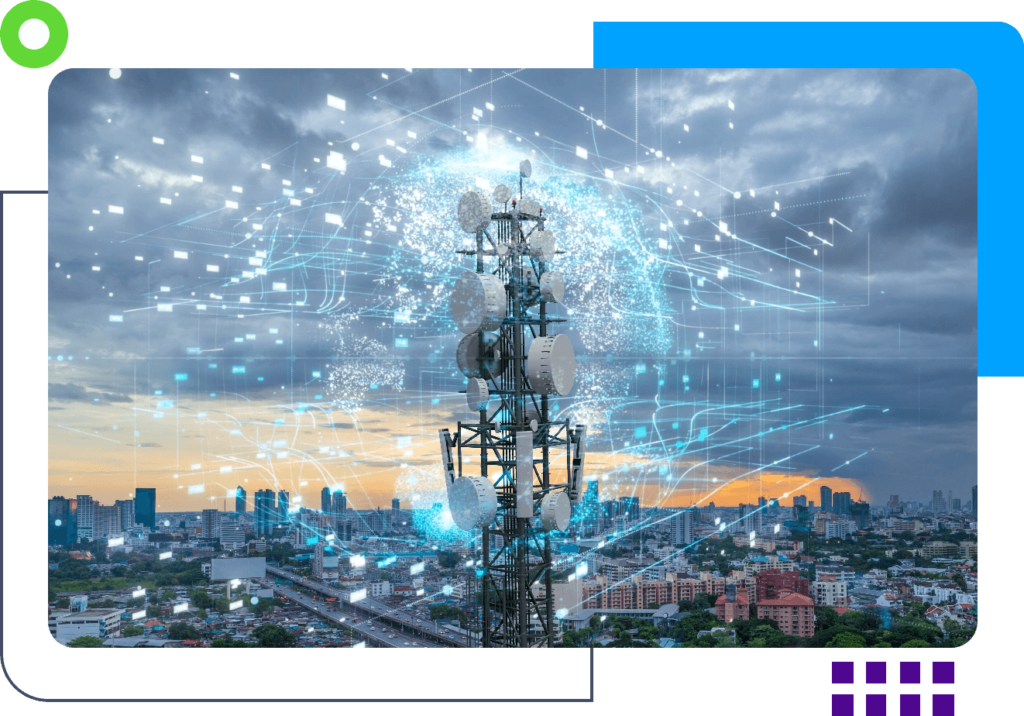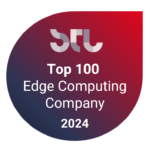Composable Applications in a Connected World
Create flexible and adaptable applications designed to seamlessly integrate and interact within a connected ecosystem
Hyperblox Blueprints
The HyperBlox Builder empowers you to create applications with agility, using an iterative, low-code model- driven development methodology. Applications are delivered as Blueprints, containing essential business logic, deployable in HyperBlox Runtime environments. These environments offer a range of platform services, including scalability, security, availability, redundancy, upgrades/downgrades, multi-cloud support, and networking capabilities.
HyperBlox Blueprints define application structures, focusing on composition using HyperBlox Tasks (Clusterlets), the system’s fundamental building blocks. Coordinated by the Runtime, Tasks efficiently execute application functions. This blueprint-driven approach ensures applications remain portable across Runtime environments, facilitating rapid updates and deployments while minimizing infrastructure impact.
Connectivity Suite
HyperBlox provides off-the-shelf Blueprints for readily deployable Network Functions for delivering Connectivity services.

Application Suite
HyperBlox develops custom Blueprints for Edge applications that solve key business challenges within the IoT and sensor fusion domains.

- Connectivity Suite
5G Core Network Functions
The 5G Core Network Functions are essential components that enable the operation of a 5G network. These functions include:
Access and Mobility Management Function (AMF)
Manages access and mobility-related functions, including registration, authentication, and mobility management for UE, ensuring efficient handover and mobility support.
Authentication Server Function (AUSF)
Provides authentication and security functions for UE registration and access, ensuring secure network access and user authentication.
Policy Control Function (PCF)
Controls policy enforcement and management, implementing network policies and quality of service (QoS) rules to optimize network resources and user experience.
Network Slice Selection Management Function (NSSMF)
Oversees lifecycle management of individual network slices, ensuring efficient resource management and service quality, from creation to termination.
Network Repository Function (NRF)
Acts as a central repository for network function information, enabling service discovery and routing optimization within the network.
Network Exposure Function (NEF)
Enables secure and controlled access to network data and services, facilitating communication between authorised third-party applications and network functions.
Network Slice Selection Function (NSSF)
Responsible for dynamically selecting the network slice based on service requirements, ensuring optimal performance and quality of service across the network.
Unified Data Management (UDM)
Manages subscriber data and profiles, facilitating authentication, authorization, and subscription management for user equipment.
These functions collectively ensure the efficient operation, management, and optimization of a 5G network, supporting high-speed data transmission, low-latency communication, and seamless connectivity for users and devices.
- Connectivity Suite
LTE Core Network Functions
The LTE Core Network Functions are essential components that enable the operation of an LTE (Long-Term Evolution) network. These functions include:
Mobility Management Entity (MME)
Manages UE (User Equipment) mobility, including tracking, authentication, and handover procedures, ensuring seamless connectivity and mobility management within the LTE network.
Serving Gateway (SGW)
Routes user data packets between the UE and external networks, optimizing data transmission and ensuring efficient data routing within the LTE network.
Packet Data Network Gateway (PGW)
Provides connectivity between the UE and external packet data networks, such as the internet or corporate intranets, enabling data exchange and internet access for LTE users.
Home Subscriber Server (HSS)
Stores subscriber information and authentication data, facilitating user authentication, authorization, and mobility management within the LTE network.
Policy and Charging Rules Function (PCRF)
Enforces network policies and charging rules, controlling quality of service (QoS) parameters and charging policies for LTE users, ensuring efficient resource allocation and revenue management.
Authentication, Authorization, and Accounting (AAA) Server
Performs authentication, authorization, and accounting functions for LTE users, ensuring secure network access and user authentication while tracking usage for billing and accounting purposes.
These functions collectively ensure the efficient operation, management, and optimization of an LTE network, supporting high-speed data transmission, seamless connectivity, and quality of service for users and devices.
- Connectivity Suite
Wi-Fi Convergence
Wi-Fi convergence into LTE/5G networks refers to the integration of Wi-Fi technology with cellular networks to enhance network performance, coverage, and user experience. This convergence enables seamless handovers and offloading of traffic between Wi-Fi and cellular networks, allowing users to access data and services across both networks seamlessly. The 3GPP standard defines two types of Wi-Fi access: trusted and untrusted Wi-Fi access. HyperBlox provides Blueprints to support the convergence of both trusted and untrusted Wi-Fi access.


- Connectivity Suite
Wireline Wireless Convergence
Wireline Wireless Convergence, as defined by the Broadband Forum (BBF), refers to the integration and seamless interoperability between wireline and wireless networks. This convergence aims to provide a unified and consistent user experience across different network technologies, including fiber-optic, DSL, cable, and wireless broadband.
The BBF envisions Wireline Wireless Convergence as a strategic initiative to address the growing demand for high-speed broadband services and the proliferation of connected devices. By integrating wireline and wireless networks, service providers can offer enhanced connectivity options, improved coverage, and increased flexibility to meet the diverse needs of consumers and businesses.
Key objectives of Wireline Wireless Convergence include
Seamless Handover
Enable smooth transitions between wireline and wireless networks, allowing users to maintain connectivity while moving between different access technologies or network environments.
Unified Management
Provide centralized management and orchestration of wireline and wireless network resources, simplifying network operations and reducing complexity for service providers
Quality of Service (QoS) Optimization
Optimize QoS parameters across wireline and wireless networks to ensure consistent performance and user experience, regardless of the access technology being used
Service Innovation
Foster innovation in broadband services and applications by leveraging the combined capabilities of wireline and wireless networks, such as high-speed connectivity, low latency, and ubiquitous coverage.
Accelerate next-generation broadband networks
By promoting Wireline Wireless Convergence, the BBF aims to accelerate the deployment of next-generation broadband networks and facilitate the delivery of advanced services, such as ultra-high-definition video streaming, virtual reality, and Internet of Things (IoT) applications, to consumers and businesses worldwide.
HyperBlox provides custom Blueprints to support the wireline wireless convergence.

- Application Suite
Industry-specific Applications
HyperBlox provides tailored Blueprints for developing Edge applications for solving business critical problems in the IoT and Sensor-fusion domains.
Agriculture
5G applications can improve agriculture by enabling real-time monitoring of crops, livestock, and environmental conditions, leading to optimized farming practices and increased yields.
Healthcare
5G applications can enhance healthcare by enabling real-time remote patient monitoring, telemedicine consultations, and rapid transmission of medical data, thereby improving access to healthcare services and patient outcomes.
Logistics
5G applications can benefit the logistics industry by enabling real-time tracking and monitoring of shipments, enhancing supply chain visibility, efficiency, and responsiveness.
Manufacturing
5G applications can improve the manufacturing vertical by supporting the adoption of smart factories and industrial automation, enabling real-time monitoring of production processes, predictive maintenance, and seamless integration of IoT devices.
Military
5G applications can benefit the military by enabling secure and reliable communication, enhanced situational awareness, and the deployment of advanced battlefield technologies for improved operational effectiveness.
Smart cities
5G applications can improve smart cities by facilitating real-time data exchange, enabling efficient traffic management, smart energy distribution, and enhanced public services for a sustainable and connected urban environment.
Experience the HyperBlox Advantage
Join the ranks of enterprises that trust HyperBlox Builder to streamline application development and drive innovation. Experience the HyperBlox advantage and unleash the full potential of your enterprise with our intuitive, powerful, and versatile application development environment.


